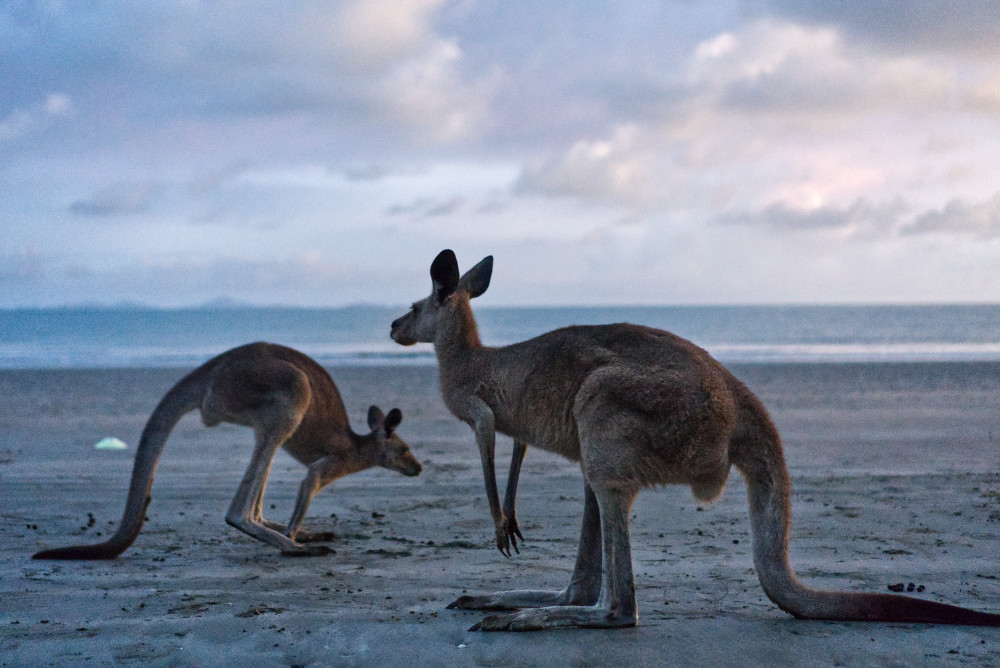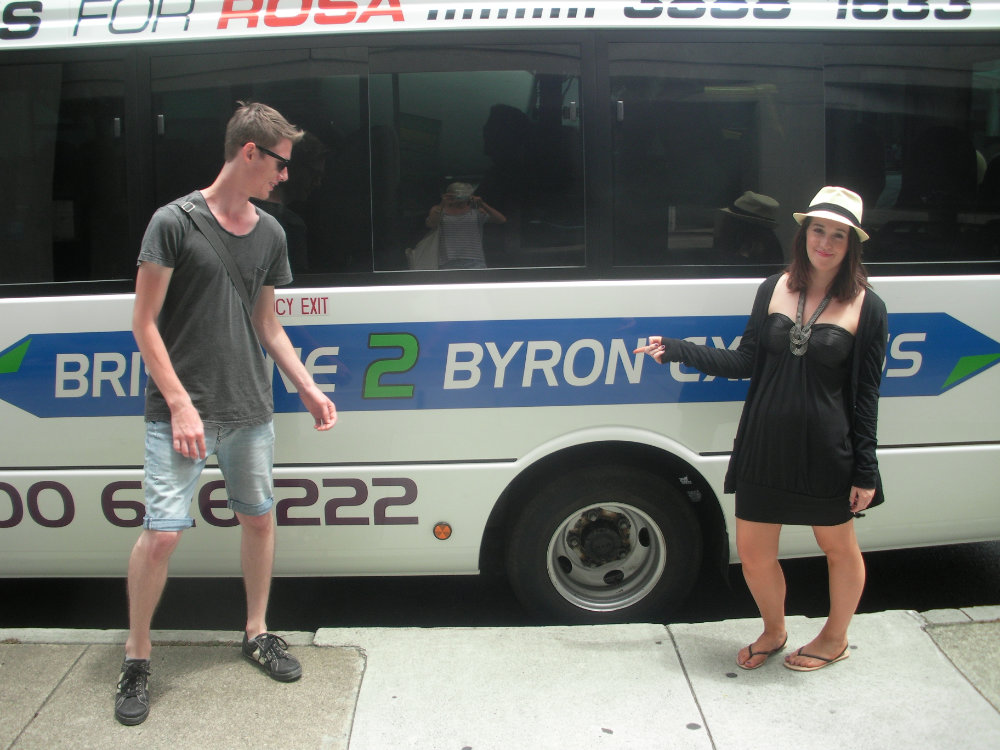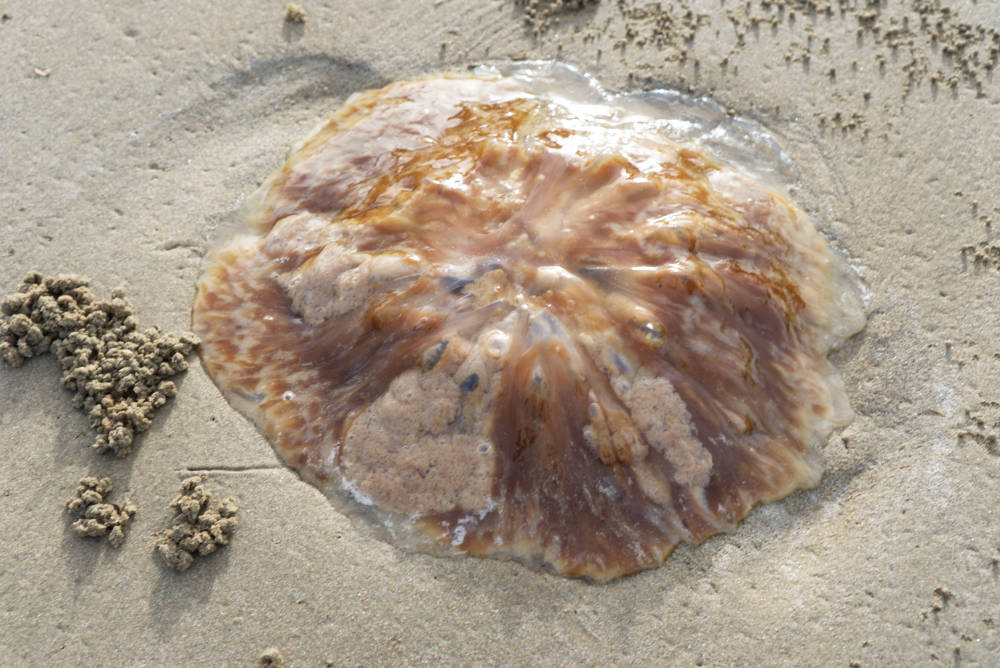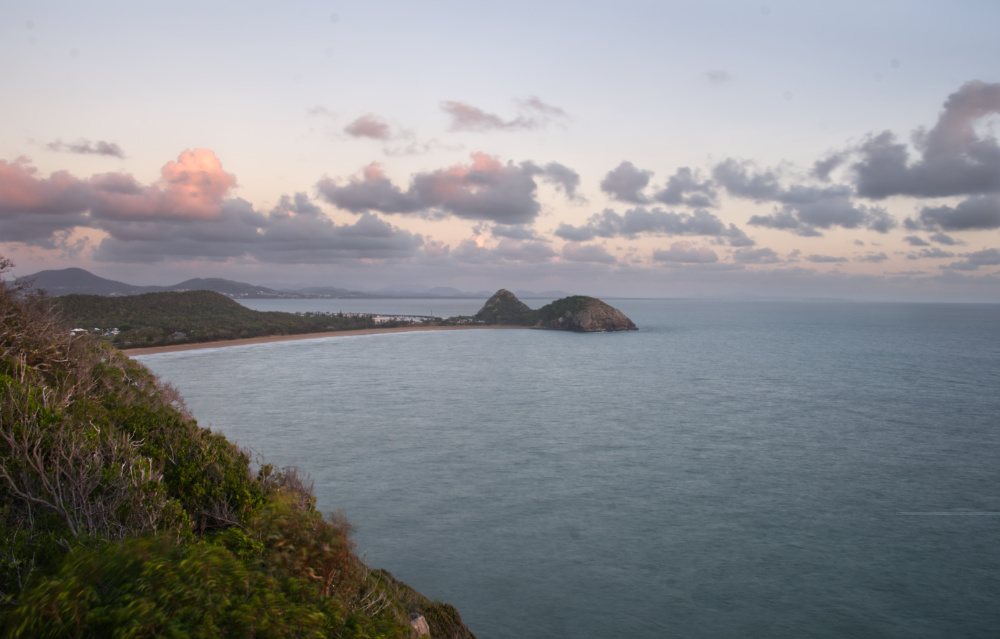Some of the links in this post are affiliate links. This means if you click on the link and purchase the item, I may receive an affiliate commission at no extra cost to you.
Excited about your trip to Australia? Here’s a list of 20 things not to do in Australia to ensure you have the best trip ever. You’ll find cultural taboos, things that will save your life, and a few other things that will impress the pants off the Australian locals.
I have lived in Australia for over a decade so I’ve got tons of inside advice for you. Some of it is basic things you wouldn’t do anywhere, but a lot of it is more unique to Australia in general. Read on for my tips.
Swim in a Rip or Outside the Flags

One thing I didn’t know about before moving to Australia was rips, and how to spot them. In fact, I didn’t even know what a rip was. For those like me; a rip is a current that will pull you out to sea (and often, quite quickly). Many die in rips due to trying to fight them and swim back to shore.
On popular beaches you don’t have to worry about this so much as lifeguards will put flags out. In these cases, its important to stay in between the flags when swimming. If you start drowning outside the flags, the lifeguards will have to go out into unsafe conditions because of you, so best to be considerate.
If there are no flags it’s a good idea to learn how to spot a rip current. The rip is the part of the beach that looks the calmest without waves. Its waveless because it’s the section where the water is going back out into the ocean. So while it may look like the perfect spot to swim, its best to stick to the parts of the beach with small waves. This website – https://beachsafetyhub.org.au/learn-&-play/beach-ocean-safety/what-is-a-rip-current/ has some examples with pictures.
From my understanding, rips are most common in beaches with waves. I could be wrong on that though.
Regardless, if you get stuck in a rip don’t try to fight it to swim back to sure. Swim perpendicular to the shore until you get to a section with waves going back towards the beach. Then you should be able to swim back to land.
If you can’t swim out of it, and there are lifeguards, remain calm and raise your hand in the air. This is a signal for distress and they should could out and get you. Try to flip onto your back and relax as much as you can to prevent drowning.
Try to Climb Uluru / Ayers Rock
Apparently this used to be a thing you could do but the rules changed in 2019 at the request of the Anangu people, who the rock is of great significance to. Since it has been officially banned there are no tours that will let you do this, but its important to know that this is a major thing not to do in Australia.
Wear a Cork Hat in the Cities
I have never seen anyone wear a cork hat anywhere, but especially not within the cities (hence me not even having a picture of one). Wearing a hat is a great move due to the Australian sun, but wear something cute instead.
If you venture deep into the countryside and see people wearing them there, then buy one on location. Otherwise, you’ll just get a bunch of weird looks.
Forget to Put on Sunscreen

The sun is Australia is especially strong and its very easy to get sunburnt, even without sunbathing on the beach for a few hours. If you know you’ll be out sightseeing its best to put some on your face at least) to ensure your nose stays its originally colour.
As a pale skinned person I have definitely fallen victim to this, returning to the indoors a much redder human being. Reef safe sunscreen is the best option if you’re going into a natural body of water, but for walking around any old SPF 50 will do. There are also tons of moisturisers with it mixed in these days, so maybe opt for one of those if you don’t like applying it separately.
Answer With Anything Other than ‘Good’, When Asked How You Are
This might be the same everywhere but the only acceptable answer to when strangers ask you how you are is ‘good. How are you?’ People will often ask you this when ordering food and they definitely don’t want to hear your life story. Its just a courtesy.
Its also expected to ask them back, and wait for them to also say ‘good’, before going on with your order.
Litter
We love our rubbish bins in Australia. There is one on almost every street corner in public areas, so there’s no need to dump your rubbish on the ground. Unlike some countries where its hard to find a bin, we have them in toilets, public parks, beaches and shopping centres.
If you can’t find one, you can stick your food wrappers or water bottles in your bag and you’ll surely come across one soon. That’s what most Australians do.
If you instead to drop it on the ground, chances are someone will call you out about it. Or maybe pick it up and throw it at you (I have seen this happen to a person more than once).
Get Too Close to Wildlife

While kangaroos, wallabies and koalas do seems cute and cuddly, its not really safe to approach them in the wild. These are wild animals and can attack if they feel threatened. There are places where you can get up close to them, such as Australia Zoo, but these ones are used to people so will be more likely to be friendly.
There are other animals native to Australia where it goes without saying to give them some space. Crocodiles should not be approached in any circumstances. Even in tours, you’ll notice they maintain a safe distance. It safe to assume they can outrun you (oh and they can climb over fences). Same with snakes – some of them are poisonous and some aren’t, but keep them at a distance.
Sharks are also a highlight for divers and some snorkelers. Most of the sharks you’ll encounter are harmless such as lemon and nurse sharks, but still, give them their space.
There are lots of non harmful jellyfish, but my tip would be if you are in Australia and you see a jellyfish to move away from it. Don’t poke it. Don’t wear it like a hat.
Swim in Croc Country
Unfortunately, while there are many beautiful waterholes in Australia there are also terrifying crocodiles. These crocodiles are mostly in North QLD and the Northern Territory, but can appear in different places.
Certain locations will be known as croc safe, while others are well known for having crocodile sightings. Those places known for crocs will have signs up warning you not to enter bodies of water such as beaches, lakes or creeks. Ignore these signs at your peril.
If you see a croc warning sign please don’t go near the edge of the water either. Keep a safe distance. You can still get photographs without dipping your toes in. There’s no need to risk your life.
If you are in croc country (the areas known for crocodiles) and you don’t see a sign at a particular swimming spot, there are two ways to tell if its safe to swim. The first one is to do a search online to see if there have been any crocodile sightings, and if so, have there been any recently. The second is to see how popular the spot is for swimming.
For instance, if there’re no croc sightings and there are 20 people swimming in there when you arrive, its likely safe. However if there was a croc sighting last week and you see a few tourists swimming, its time to put your clothes back on and walk back to the car.
As someone who personally doesn’t want to get attacked by a crocodile, I do my research before swimming inland. While you can never be 100% certain, its unlikely you’ll encounter a crocodile in places where there have been no sightings, and where other people often swim.
Drive on the Wrong Side of the Road
Different countries drive on different sides of the road, so make sure you understand the rules in Australia before you step in your hire car. Or well, even before crossing the street.
We drive on the left in Australia, in direction of travel.
My left or your left you ask?
Both of our lefts.
If you ever get confused, use the direction that cars are parked on the side of the road as your guide. Driving on the wrong side of the road is obviously one of the more important things not to do in Australia.
Forget to Thank the Bus Driver

In Australia we have a custom of waving or thanking the bus driver when getting off the bus. This is indoctrinated into us from childhood, and continues into adulthood. The most common options are ‘thank you,” as you exit via the back door, or for those of us who are shy, a raise of the palm and a look in their direction works just as well.
You’ll notice this if you have to use a bus anywhere in Australia. It’s a cultural taboo not to do so, and is not something you’ll immediately recognise.
Even if the bus driver has no chance of seeing your wave, others will, and that’s all you need to do to appease us. Non wavers (or thank you-ers) get looks of disapproval. And much like the magpies I talk about later in this article, we will remember your faux pa for up to five years.
Travel to an Area with Flood Warnings
If the news predicts a flood in a certain location then its wise to take heed of the warning. This is one of the most important things not to do in Australia. In the past few years Australia, especially NSW and QLD have suffered through a number of floods. It is not safe to continue to a destination with flood warnings.
If there are flood warnings and you have booked a tour in that area, speak with the tour company and check your options. For instance, when booking a tour to see the turtles in Bundaberg when a flood was predicted, the company swiftly refunded our money upon our email.
Drive without Caution at Night in Rural Australia
So we have these things called Kangaroos, and they love to roam around in the countryside. So much so that you’ll notice in (mostly) rural areas that there will be signs warning you about them while driving.
Having driven in the countryside around QLD and NSW, its clear that you don’t have to go too rural before you start seeing them. If you are driving around these areas make sure you keep an eye on the road, and if you see some kangaroos close to the road, slow your speed. They can be a bit unpredictable and can cause some serious damage to your car.
I’ve never had an incident with one, but I do know a few things. Firstly, its well known in Australia if you are about to hit one, that you shouldn’t try to swerve to avoid it. It sounds horrible, but swerving can put your life in danger whether there are other cars coming or not. You could end up in a much worse situation. Break, but don’t swerve. Secondly, if you see one that is injured you can call the RSPCA 1300 ANIMAL (1300 264 625), and really that goes for any injured wildlife. They can come out and make sure the animal is okay.
If you do have the misfortunate of accidentally hitting an animal, its recommended to stop and check to see if they are okay. If the animal is alive but injured, call the RSPCA. If the animal is dead, call the RSPCA. And if the animal looks pregnant, call the RSPCA. Don’t get too close, especially in the case of kangaroos, but please don’t leave them there to suffer without alerting someone who could potentially help.
So be aware and focused on the road when driving in the countryside, for your safety and the safety of our wildlife.
Snorkel without a Stinger Suit in Stinger Season

Honestly, tons of people swim without stinger suits at the beach in QLD. There are stinger nets at some beaches so its not as bad close to sure. However if you are going on a snorkeling trip it would be crazy to refuse a stinger suit in the middle of stinger season.
In Australia we have poisonous jellyfish, both big an small. The ones that are the most dangerous though are the small ones; the irukandji jellyfish. If you get stung by one of these jellyfish you can suffer a range of consequences from extreme pain to death. So, as you can understand, you definitely want to wear a stinger suit.
While swimming at beaches you are less likely to encounter them but may encounter other types of jellyfish that are bigger. These ones are easier to spot and can cause pain, but nowhere near as much as Irukandji. Some beaches will put out warning signs and even have vinegar nearby to treat stings.
Stings are not super common, but happen enough so I would encourage you to accept a stinger suit when offered when going out into deeper waters. If you don’t want to risk it at all, Australia also has tons of inland swimming holes to visit instead.
Order Cocktails on a Backpackers Budget
Cocktails are really expensive in Australia (any maybe everywhere) so if you are on a budget, you’ll want to avoid them at bars and restaurants unless there’s a special. For instance, a mojito on Moreton Island cost more than my entire meal ($22 vs 27), and yes, it was great – but not $27 dollars great.
While the island resorts are a bit expensive, the prices are not too different in cities either. I can’t imagine seeing a mojito for under $15 dollars, and most cocktails are often $18-25. Sometimes you will go somewhere which has specials, but apart from that you might be best sticking to beers, happy hours and simple liquor + soft drink options.
Complain Loudly
Australians don’t love complainers and we’re likely to be unsympathetic, whether we show that obviously or not. If something bad happens- sure, have a quick whinge but then move on. Noone wants to be stuck behind you in a line while you spend 5+ minutes complaining about something small.
So make sure you avoid doing this on your trip to Australia.
Try to See All of Australia in Two Weeks

We’ve all been there- determined to check out an entire country in 2 weeks. While this may let you see the highlights in some countries, Australia is not one of them. Australia is massive, and even flights can take around 5 hours to get from one major city to another. If you were thinking of traveling by land, its going to take much, much longer.
My suggestion is if you only have two weeks and plan to travel by land, aim for a state roadtrip. For instance, you could do Brisbane to Cairns in 2 weeks, and get to stop at quite a few highlights such as the great barrier reef, Cape Hillsborough, the Whitsundays etc. You wont see everything but atleast you wont spend all your time driving or on a bus.
I’d strongly recommend 4 weeks if you want to travel to different parts of Australia, but you’ll need to have a budget for flights and be okay with only visiting a few attractions near each major city. Otherwise pick a state and plan to come back in the future.
Expect Help at a Petrol Station
Noone is coming to help you. In fact, if you take too long a line may begin to build behind you and start honking at you. So make sure you know how to open your fuel cap and pump gas ahead of time.
I have driven a couple of times overseas, but not everywhere, so just in case its different elsewhere:
Step one: Pop open fuel door from inside the car
Step two: unscrew the fuel cap from said fuel door
Step three: lift up the relevant pump (eg: don’t choose diesel or ethanol if your car runs on unleaded) and there should be a noise like a click.
Step four: insert into your car and push down the button on the handle.
Step five: remember the number on your station and go into the petrol station to pay.
Say Mean Things about Steve Irwin
Steve Irwin is a national treasure so don’t you dare.
Underestimate Magpies
Every year Australians suffer a great trauma which is officially known as magpie swooping season. We’ve all been victimised by a magpie at least once in our lives so we all have a story. Magpies are the reason you’ll see cyclists sticking mutli-coloured straws into their helmets at certain times of the year. Or why you’ll see a teenage girl speed walking past you while shielding her head and looking at the sky anxiously.
Magpie swooping season is roughly August to October, so walk under trees with cautious during this time. Some tips to avoid:
- Travel in groups: they’re more likely to target individuals.
- If cycling: stick something into your helmet (such as straws or a mini flag). This way they’ll attack the item as its higher than your actual head.
- If you do get swooped, duck and cover your head. Forget about your pride and walk swiftly away.
- Look out for signs warning of swooping.
- Don’t try to attack them back or wave your arms around – magpies can and will hold a grudge. Especially if you intend to return to this spot in the next few years.
- Wear a hat.
So sharks, spiders, snakes, crocodiles, jellyfish and now magpies?
Well, yes, but all a magpie will do is try to swoop you. They often stick to surburbian areas where they can put their nests in the trees above so its not something you’re too likely to be affected by while out sightseeing.
I’ve made it sound a bit scary but honestly, we all laugh over our collective magpie trauma and it only makes us closer. I’d take a magpie swoop any day over a spider.
Believe in Drop Bears
Ask me in person, and I’ll tell you drop bears are real.
Ask me on the internet? Okay, you got me, they don’t exist.
Ask me if I’m just lying about lying? Well, all I will say is don’t sit under a tree when there’s ruffling above you. Whether drop bears are real or not.
Are drop bears just koalas? No, but I wouldn’t sit under a tree with a koala bear in it either.
So as you can see, there are tons of things to avoid doing in Australia. Some of these tips are great advice for anywhere you visit, while others are really specific to Australia. Its common to make some mistakes when traveling to a foreign country, but hopefully with this list, you’ll have a better trip.
Leave a Reply